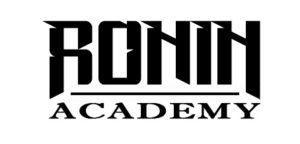Mastering the Art: BJJ Journey Chronicles
Brazilian Jiu-Jitsu (BJJ) stands as a martial art renowned for its intricate techniques, strategic maneuvers, and a philosophy that transcends the confines of the training mat. In the quest for mastery, practitioners often find themselves immersed in a transformative journey, documented through their personal chronicles.
At the heart of this martial art lies the essence of mastering not only physical movements but also the mental and emotional aspects of combat. The journey of a BJJ enthusiast is akin to a narrative, unfolding through the belts, each representing a chapter in the story of progression. White to black, each color symbolizes growth, resilience, and the acquisition of skills that define a BJJ practitioner.
The chronicles begin with the first steps onto the mat, a white belt tied with anticipation and curiosity. The initial lessons are like the opening pages of a book, introducing the fundamental concepts of BJJ. Learning the basics of positions, escapes, and submissions sets the foundation for what lies ahead. The white belt phase is a period of discovery, where the practitioner acclimates to the unique language of BJJ – the grips, the guards, and the ground game.
As the journey progresses, so does the complexity of the techniques. Blue, purple, brown – each belt level unfolds new chapters in the BJJ narrative. The practitioner navigates through the intricacies of sweeps, guards, and transitions. Rolling sessions become a canvas where the strokes of learned techniques blend with instinct, creating a unique expression of one’s grappling style.
Challenges and setbacks are inevitable in any journey, and the BJJ chronicles are no exception. Struggling through a tough roll or facing a formidable opponent teaches valuable lessons about resilience and adaptability. It’s during these moments that the true spirit of a BJJ practitioner is revealed – the ability to learn from setbacks and emerge stronger.
The higher belts bring not only advanced techniques but also a deeper understanding of strategy and timing. Brown and black belts are chapters of refinement, where the practitioner hones their craft and often becomes a mentor to others on the same journey. The BJJ mat transforms into a stage where the seasoned artist of combat crafts their masterpiece, showcasing a seamless fusion of technique, intuition, and experience.
Beyond the physical aspects, the BJJ journey is a mental and emotional odyssey. It cultivates discipline, patience, and humility. The practitioner learns to navigate the emotional highs and lows that come with victories and defeats. The ego is tempered, and a profound sense of respect for the art and fellow practitioners develops.
Off the mat, the BJJ lifestyle becomes an integral part of the practitioner’s identity. It transcends the boundaries of training sessions, influencing daily choices, nutrition, and mindset. The chronicles extend beyond the physical realm, capturing the transformation of the individual into a well-rounded martial artist.
In conclusion, the first point, “Mastering the Art: BJJ Journey Chronicles,” encapsulates the multifaceted nature of the BJJ experience. It’s a narrative that goes beyond techniques and belts, delving into the realms of personal growth, resilience, and a lifelong commitment to the art. The BJJ journey is not just a series of classes; it’s a chronicle of self-discovery, discipline, and the pursuit of mastery.

